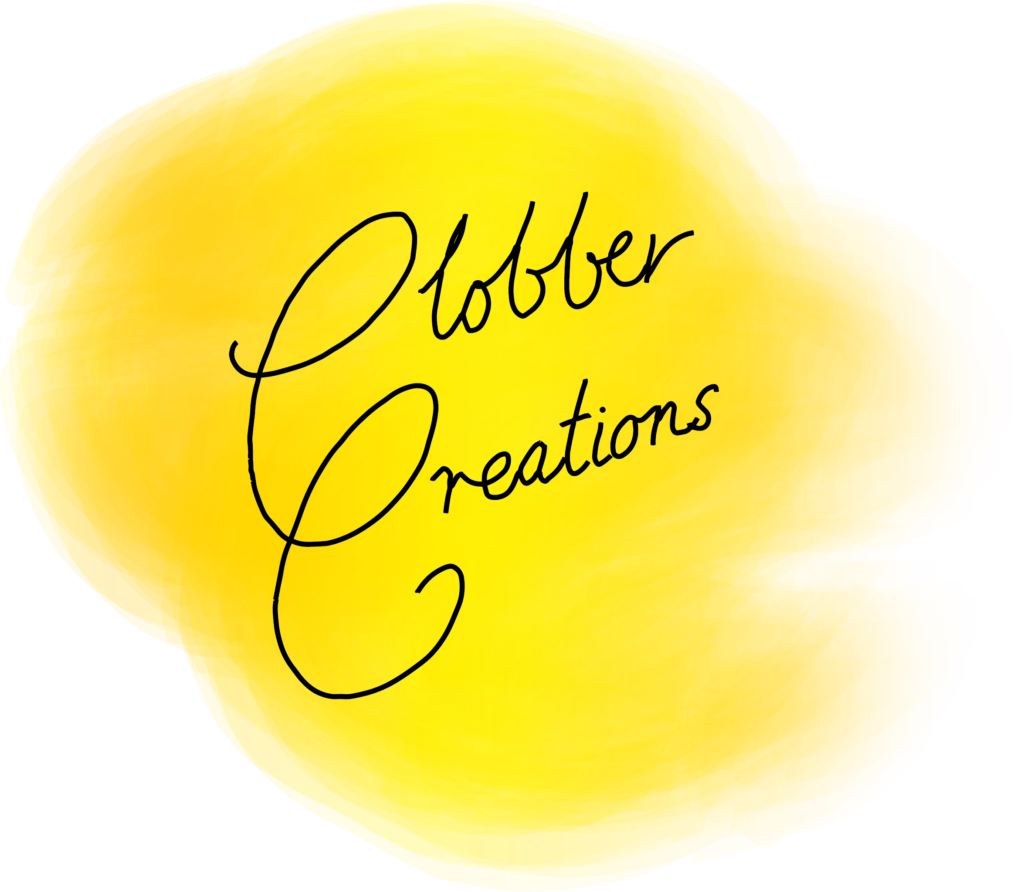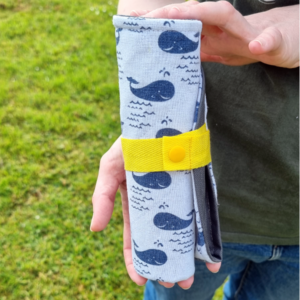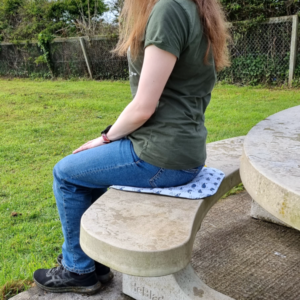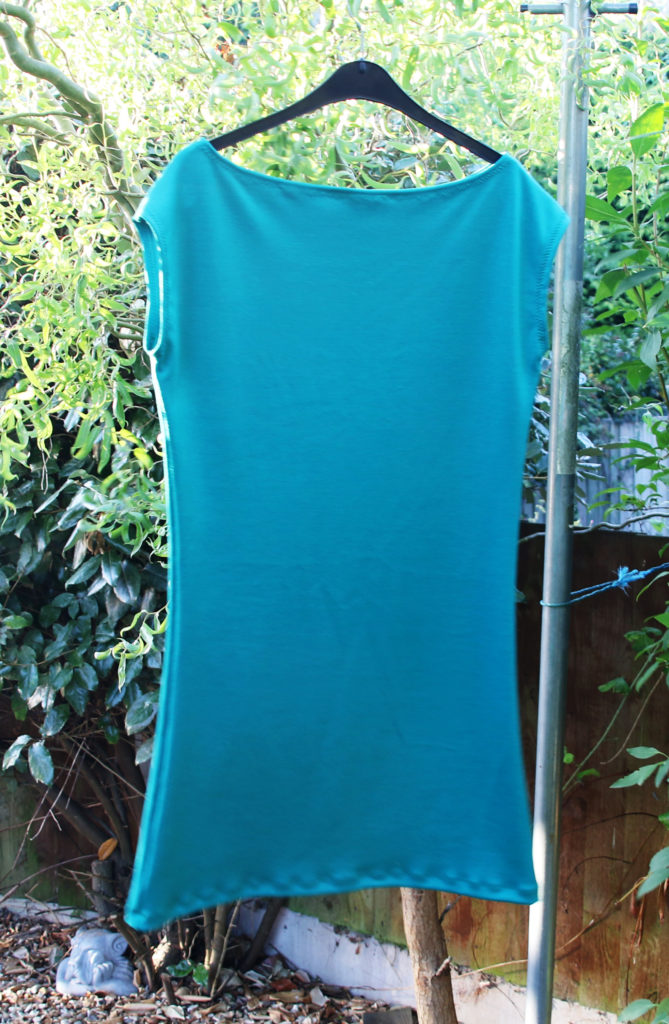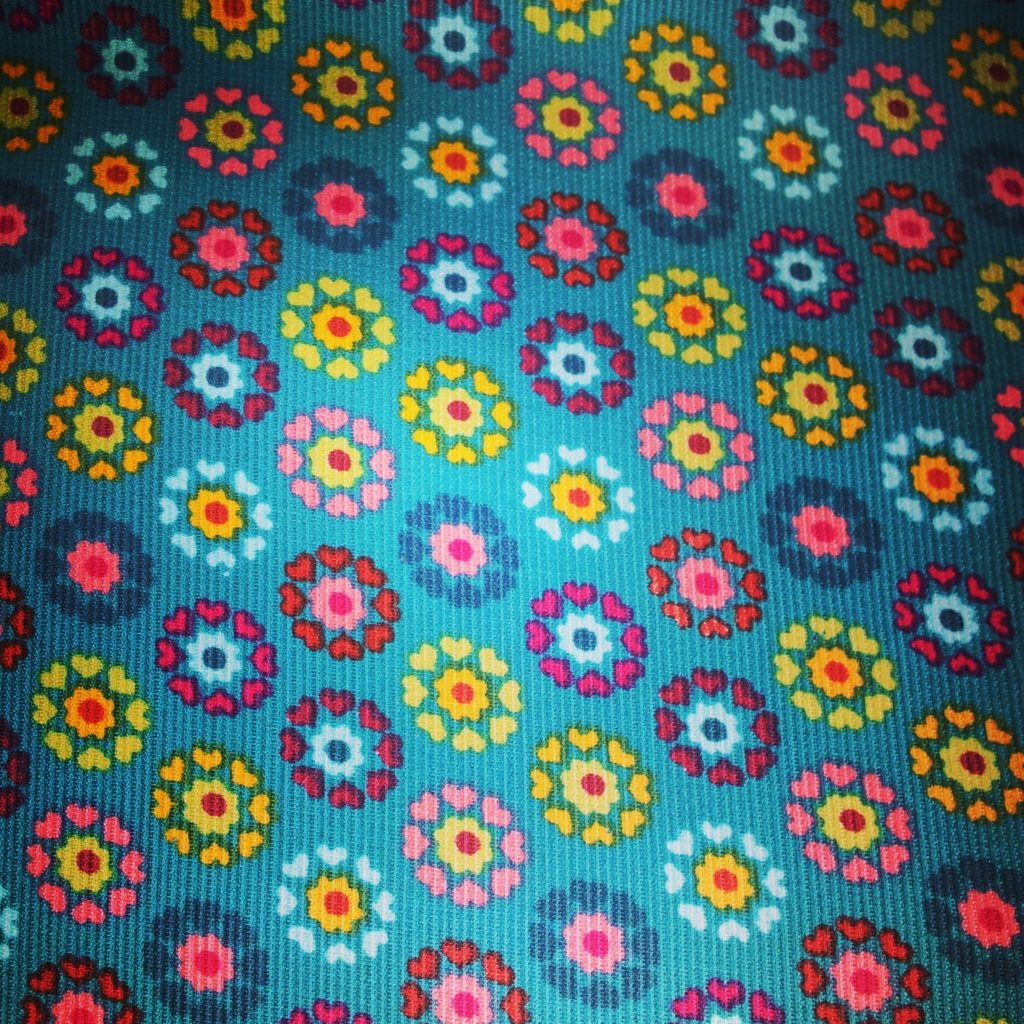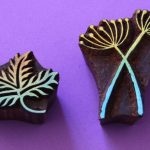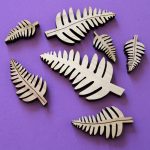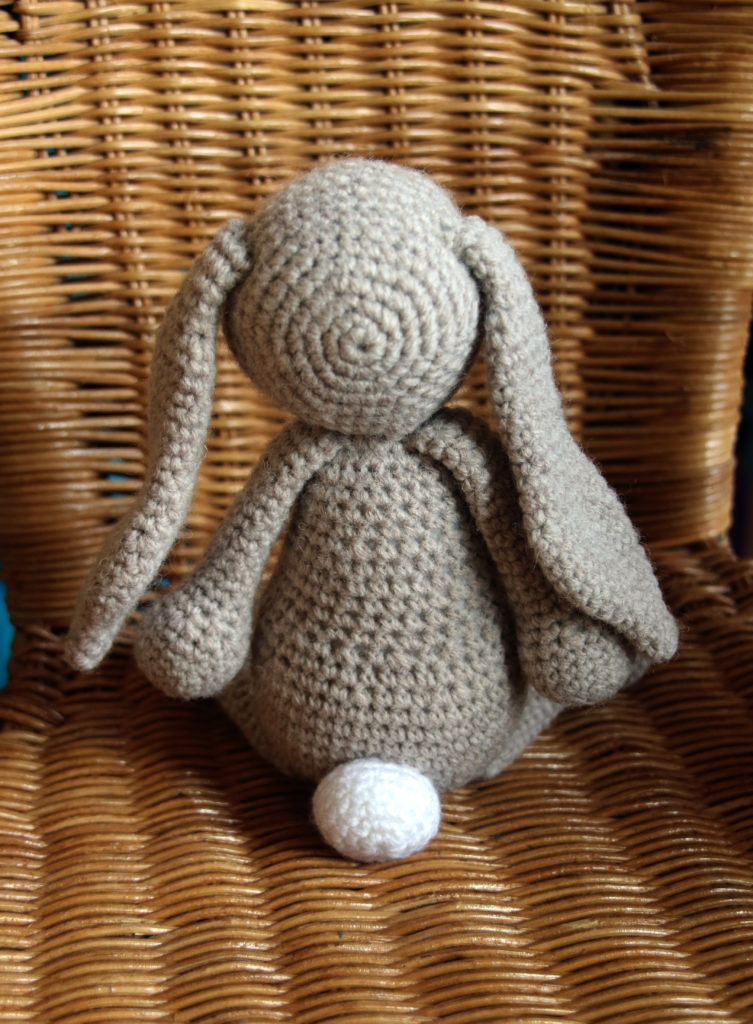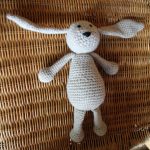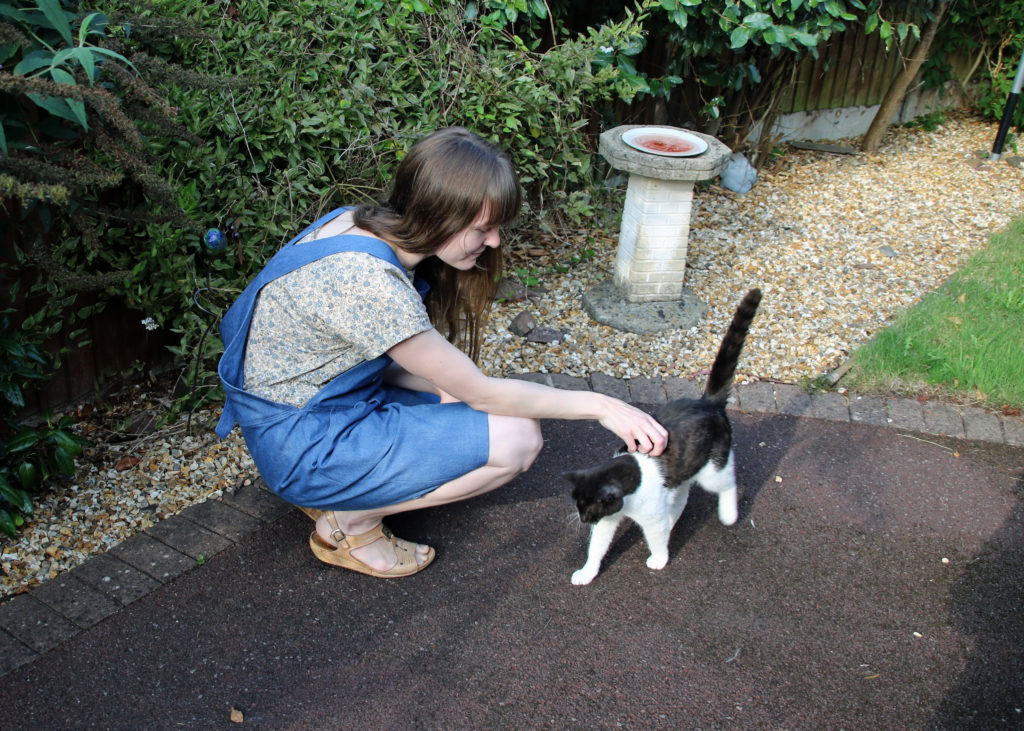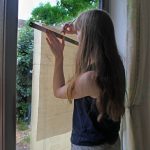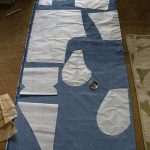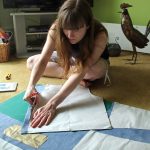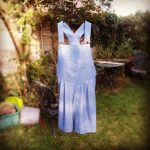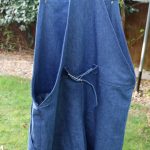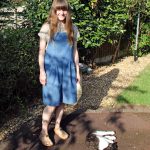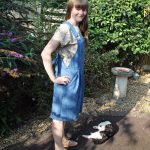The Walkley Dress

While on a bit of a dressmaking roll, I decided to delve back into the realm of knit fabrics. Having only made one successful garment with knit, I decided that I wanted to keep the pattern as simple as possible.
The simple question for this project was The Walkley Dress by Wendy Ward MIY.
This pattern requires two pieces to be cut out of your fabric, and they come from the same template. If you’re lucky enough to have 150cm wide fabric, you only need a metre! In this instance, I already had some fabric ready and waiting – a remnant from a fabric shop!
Setting up the machine proved the most difficult part. It’s been about six months since I last tried a stretch pattern, and it was a challenge to set up my machine. Following the advice from the pattern, I opted for the small zigzag stitch for the seams, and the three stitch zigzag for the hems. In addition, I attached a walking foot to my machine and loosened the pressure of the presser foot; without these adjustments, my machine did not want to stitch!
Originally, I planned to try a twin needle on the hems, but I managed to break my stretch needle one a while ago and haven’t replaced it yet. It turns out that I keep loosening the needle whenever I attach the walking foot to my machine!
I didn’t colour match the thread for this garment as I had recently acquired a set of threads in different colours (none of which were a perfect match) and I didn’t want to go out and buy more supplies on this occasion. The downside to this is that the hemming is a lot more noticeable than it would have been.
Also, I stretched the hem a bit while stitching (I did the hem before the neck and armholes). I didn’t have any stay tape or stabiliser, which could have helped to prevent this, but I did adjust my stitching technique to decrease the amount of stretching after noticing the issue on the hem.
The neckline is quite wide (though this could be in part due to my stitching ability!) but it’s really comfy and it is definitely a pattern which provides you with fast results which are satisfying! It’s a brilliant ‘first knit’ pattern too as there aren’t too many steps or seams to stitch which means you can focus on working carefully with the knit medium.
I think next time I use this pattern, I will definitely try out some knit stay tape to ensure that the garment lasts a long time. Also, I think I may opt for a patterned material.
I think I will give this pattern another go with the lessons learnt from this occasion in mind! As it only requires a metre of fabric to create a whole dress, and can be made in less time than a lot of the other patterns I have, I think another one will be made! As the pattern says, this make is versatile for all seasons as you can layer it for the winter or wear it as it is for the summer.

The stitching, sewing and hobbycrafts show!
Last Saturday, I went to the stitching, sewing and hobbycrafts show at Westpoint, Exeter, UK!
My friend and I went as part of a day coach trip to avoid the prospect of driving. Unfortunately, the pick up point was not in our town, so we had to get a lift to Truro.
When we arrived, there was a queue which wandered around the building! Once in, we decided to dive into the middle aisle which seemed quieter as others opted to choose to tackle the show from one end to the other.

The first fabric shop we saw was Fabrcis Galore, which contained an array of wonderful fabrics. After deliberation, i went back later to buy some printed corduroy, which will be perfect for a project I have in mind to make after all the Christmas gifts are made (so probably January)!
Also I picked up a lovely polar bear print from another fabric shop, which will be used in a gift I need to make very soon (currently being prewashed so no photo)!

My very first purchase was this fleece. As the nights draw in, I think I will turn to practising spinning with my drop spindle once more, and I like to pick up small amounts of fleece for this purpose. I’m not a fast spinner, so this bag is a suitable size.

We managed to sign up to a wonderful glass workshop with The Glass Garden Studio where we learned the basics in stained glass construction. I took home this angel that I made.

Tactile Treasures was another stall I was particularly interested in. Now I have a niece, I am interested in making toys which will be perfect for her learning and development. this stall sold all sorts of attachments which are teething friendly and different stitchable surfaces, such as this mirror, which can be cut, stuck and appliqued onto items. I bought some rattle inserts too which will be great to use, and received excellent tips from the owners of the business on ensuring that the toys you make a safe and meet safety standards.
I came across an air erasable pen, which is something I have been looking out for having read about them. I’ve been having a bit of trouble with water erasable pens, which have at times caused the thread to run onto the background fabric. I’m not sure they this has happened as the thread should be colour fast, but I am intrigued to find out whether the use of an air erasable pen would be safer. I plan to review this in the coming month.
The block printing stall from The Arty Crafty place was lovely as well. When we finally managed to get up to the front and admire the blocks, we were very tempted with their £30 starter pack. However, I decided to select a couple of small blocks. They were packaged in a beautiful drawstring bag. We also found some simple leaf shapes for £1 on another stall, which we plan to try out for block printing too at some point.
There were lovely displays of artwork too, including an impressive stitched cardigan!
As it was a day coach trip, it meant we were there for the whole hog and were shattered by the time we crawled back onto the coach at 5pm! But it was an interesting experience. I found it a bit overwhelming as someone who tends to avoid large crowds, but the inspiration was immense and I feel as though I’ve been drawn to another handful of hobbies in a very short time!!
Crocheted Bunny
I haven’t done a lot of crocheting beyond the string bags I make for the Etsy shop. However, this bunny pattern has been a project I’ve been looking forward to making for a long time.
Published in Simply Crochet magazine, this bunny originates from a lovely looking book called Edward’s Menagerie by Kerry Lord.
I made this bunny with Sirdar Country Style yarn, which meant it had a bit of wool content but would still be easy to wash (which I felt the parents of the owner of this bunny would appreciate)! The bunny is advised to be made in alpaca wool, but I opted for a wool blend to comprimise on price/budget and yarn content. I am slightly gutted to have since discovered an alpaca wool blend wool in a shop near my mum’s which would have worked well for this knit and was a reasonable price!
This pattern was fun to make. I would have appreciated more pictures or directions on sewing it up, but the actual pattern in the book may have more guidance on this than the magazine version. Also, I guess it means that your finished toy will be unique according to how you decide to finish it off.
Dungarees!

When I took part in the #miymarch16 instagram challenge, I put down this dungarees pattern as my sewing ambition (new Burda 3779). I bought the pattern from a charity shop for £2 just over a year ago because I loved the idea of making some, and bought some denim shortly after. However, the amount of pieces in the pattern felt overwhelming, and I couldn’t get started.
A couple of months ago, I asked my mum if I could bring along the pattern and fabric when I visited her to see if she could encourage me to get started. Over the weekend, I managed to trace the pattern, pin it onto the fabric, and then cut it out.
One of my main worries was altering the pattern to my size. However, we decided that as it was designed to be very loose fitting, I could cut it a size smaller than usual, which would ensure that the bottom half would not be too baggy!
I didn’t manage to pick it up again for about a month after this visit! Feeling that I still needed a boost, I went back to my mum’s for a crafty retreat to get the pattern finished.
It wasn’t as bad as I thought it would be. When I attached the bib section to the shorts, it didn’t provide a completely sealed finish, but I think I might have misread it. I would plan to take steps to create a better finish next time. Also, the inner sides of the bib are tacked in place and then secured by edge stitching and top stitching. However, I decided to slip stitch it in place by hand to secure it before the two rows of machine stitching.
The braces were simple to attach. The buttons have to be hammered on, but in my view, this is much easier than stitching button holes and working out where to place the buttons on the straps! There’s the added benefit that you can adjust it to size.
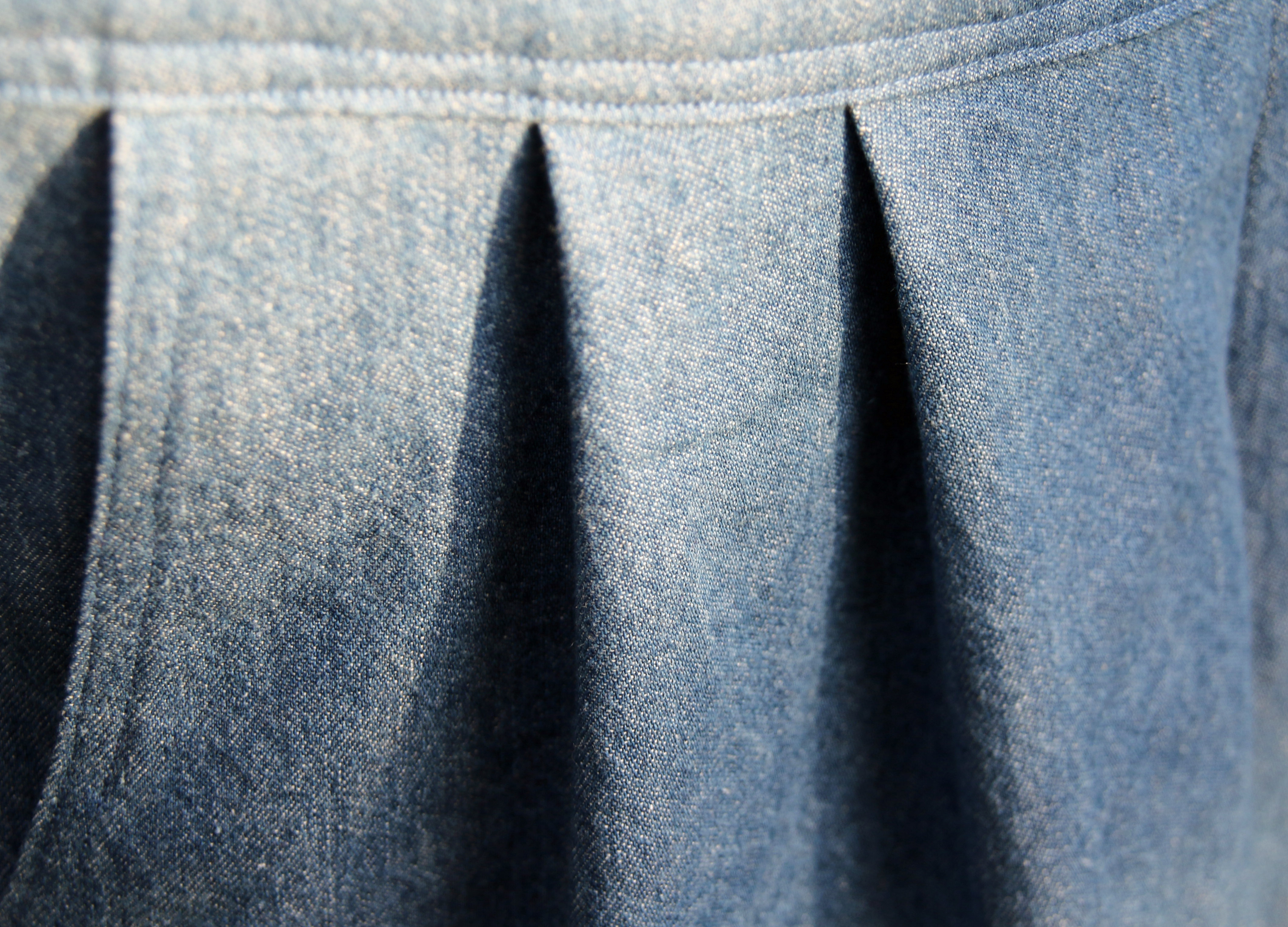
The pleats on the front were also a worry, but turned out to be really simple to complete. They were more like tucks. The denim material is so sturdy that it was easy to tack in place and press well at every step.
I think these may become my ‘uniform’ for craft days! I think I will have to make a trouser version for the winter though (I’m already imagining some navy polka dot material which could be used for the second pair…)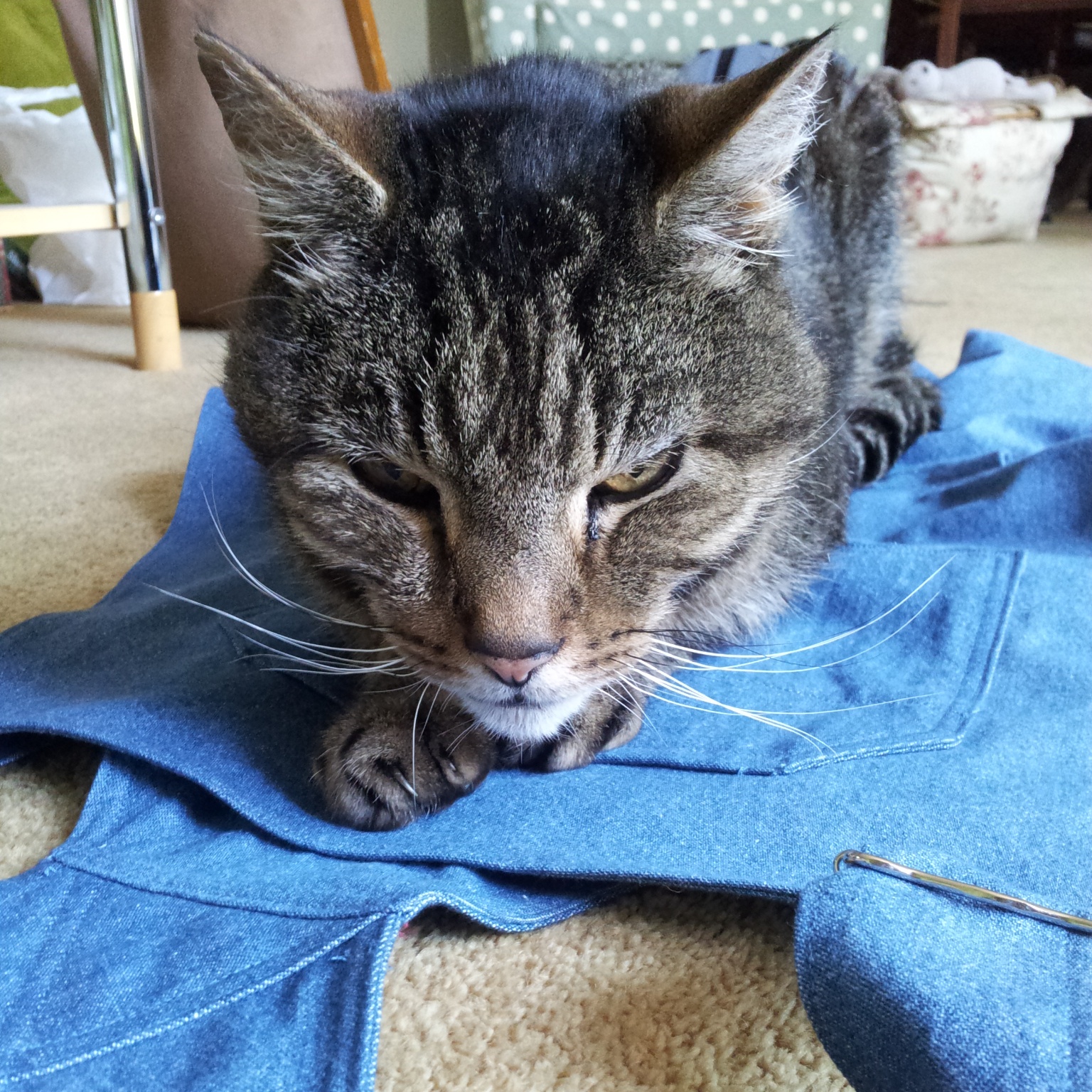 Harry did become jealous of the sewing project during its production, and kept sitting or laying on the instructions. When I moved the instructions out of the way so he couldn’t make any further holes in it with his claws, he decided to settle on the garment instead!
Harry did become jealous of the sewing project during its production, and kept sitting or laying on the instructions. When I moved the instructions out of the way so he couldn’t make any further holes in it with his claws, he decided to settle on the garment instead!
Wabi Sabi – embracing the beauty of natural imperfections
Wabi Sabi – the Japanese art of embracing the beauty of natural imperfections – is something I’ve stumbled across this month.
Wabi Sabi in craft terms appears to be finding the beauty in the handmade elements. I wish I’d discovered this art while I was learning ceramics earlier in the year as I could have defended my wobbly pots when compared to the much more symmetrical looking results from other students in the class! It’s nice to know there is a philosophy which prizes the uneven glazing, wall thickness and overall performance of the complex ceramic process.

I’ve also explored glass fusing this year, and in this class we embraced the imperfections of our pieces as we understood how these elements distinguished them from a production line. For example, bubbles within a piece can be seen as inaccuracy, but they make a piece individual.
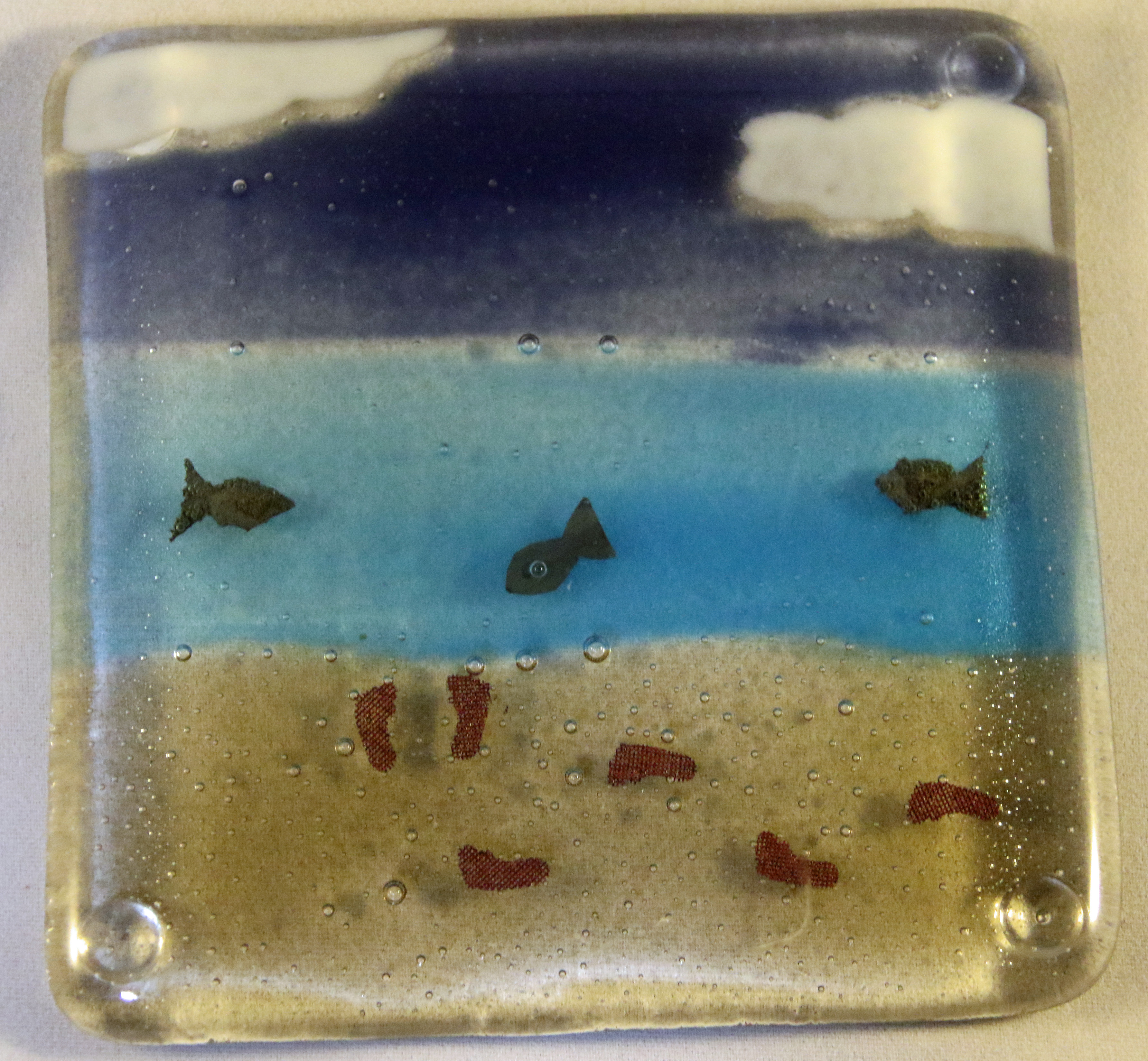
I will reflect on this philosophy as I complete my next set of projects. For example, I have almost completed all of the pieces to create a crocheted bunny toy. Instead of avoiding the construction process, which I don’t enjoy very much in knitting/crochet, I will remind myself that it doesn’t need to be sewn in exactly the right place as you might expect from purchasing one from a shop. It just needs to be completed so that it can become a cherished, handmade toy.
Reflecting on the Whole Living article on wabi sabi in the home, I realise that I incorporate this into my home already. The furniture we have is predominantly hand-downs from family members who no longer want them or need them. The table I use for sewing is my grandparent’s old kitchen table. We have a table in the lounge which we bought from a café in Southampton when it was closing down and they were selling them for £10. They had covered it in pages from a book of Shakespeare’s sonnets and there’s a slight tear on the lower self where a customer must have brushed their shoe on it. In the kitchen hardly any of our cookery items and chinaware matches. They’re not handmade but they’ve turned into something individual and imperfect through time.
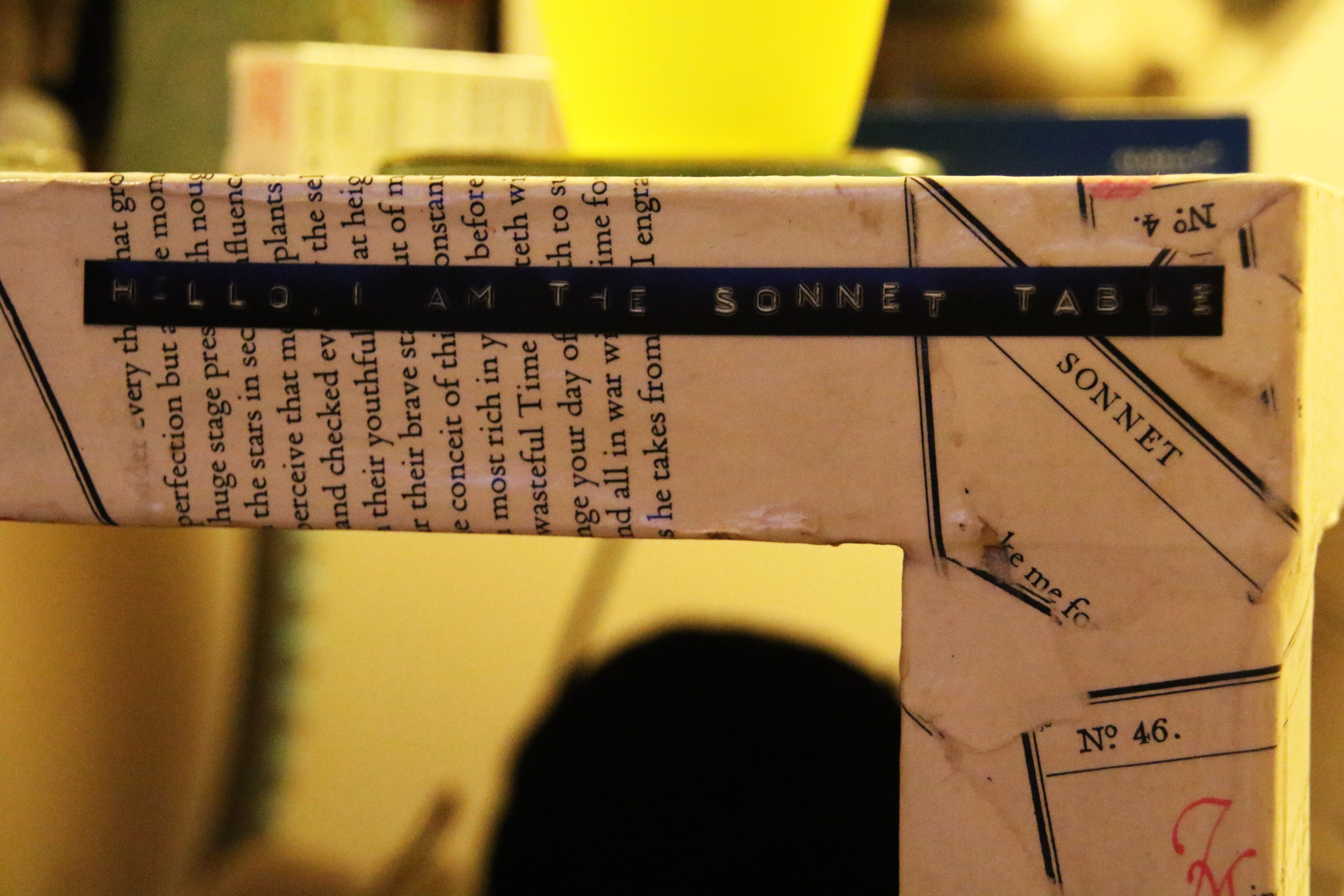
Wabi sabi seems to me to encourage you to stop and appreciate what you have rather than seek something newer or more pristine. However, it doesn’t
If you would like to look at techniques in which you can embrace Wabi Sabi to let go of some of your perfectionist tendencies, the Whole Living website has a useful article on how you can abandon perfect to enhance everyday life.
